Our detailed list of the 10 must-visit monuments in France is a curated journey through the country’s most iconic and breathtaking landmarks. From the romantic heights of the Eiffel Tower to the timeless beauty of Mont Saint-Michel, these monuments are more than just tourist attractions—they’re windows into France’s rich history, art, and culture. Whether you’re a history buff, an architecture lover, or simply seeking unforgettable views, this list offers something for every traveller. Discover why these stunning sites continue to captivate millions each year and deserve a top spot on your French travel itinerary.
Top 10 Monuments In France For All Tourists
Enjoy a deep dive into France’s heritage and culture with our detailed list of the 10 best monuments in France to visit:
1. Eiffel Tower
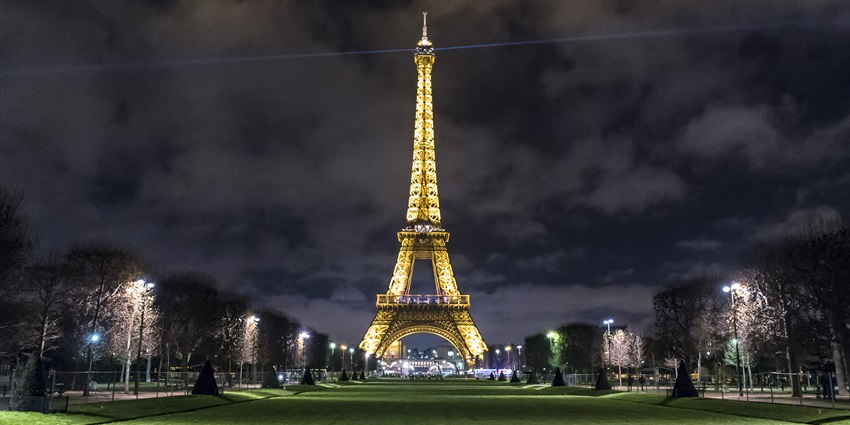
Photo: Corentin villemeur / Wikimedia Commons
The Eiffel Tower, completed in 1889 for the Exposition Universelle, was initially met with scepticism due to its unconventional design. It is among the most famous monuments in Paris, France. Standing at 330 meters, it remained the world’s tallest structure until 1930. During World War I, it intercepted enemy communications, and in World War II, French resistance fighters disabled its elevators to hinder Nazi access. It is currently the most visited paid monument in the world, with over 7 million people a year.
Location: Champ de Mars, Paris
Nearest Railway Station: Champ de Mars – Tour d’Eiffel (RER C)
Timings: 9.30 AM – 11.45 PM
Entry Fee: €10.70– €26.80 / ₹950–₹2,380
Best Restaurants To Visit: Le Jules Verne in the tower, 58 Tour d’Eiffel.
Best Hotels To Stay: Pullman Paris Tour d’Eiffel offers rooms with tower views.
2. Mont Saint-Michel
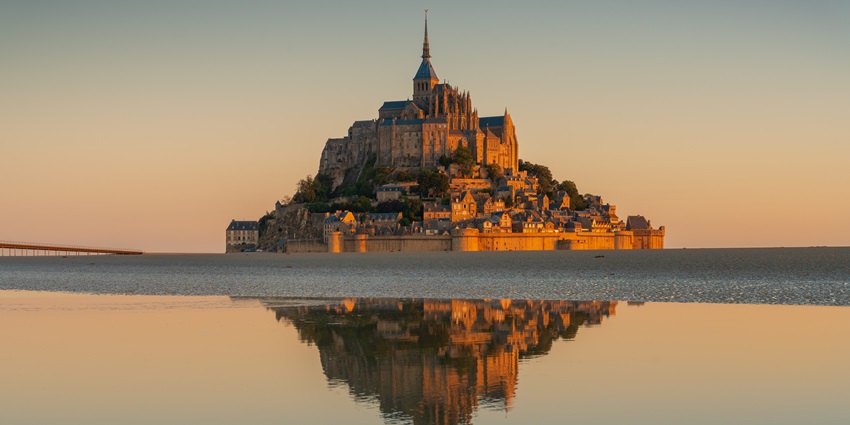
Photo: Lynx1211 / Wikimedia Commons
Mont Saint-Michel, a UNESCO World Heritage site, rises dramatically from tidal waters, creating a mesmerising silhouette. Following a vision of the Archangel Michael, Bishop Aubert of Avranches constructed a sanctuary in the eighth century, which is when it all began. Over the centuries, it evolved into a fortified abbey, withstanding sieges during the Hundred Years’ War. Pilgrims and tourists alike are captivated by its medieval architecture and spiritual ambience.
Location: Normandy
Nearest Railway Station: Pontorson-Mont-Saint-Michel
Timings: 9 AM – 6 PM
Entry Fee: €9 (₹800) for the abbey; island access is free
Best Restaurants To Visit: La Mère Poulard is famed for its omelettes.
Best Hotels To Stay: Auberge Saint-Pierre provides historic charm.
3. Notre-Dame Cathedral
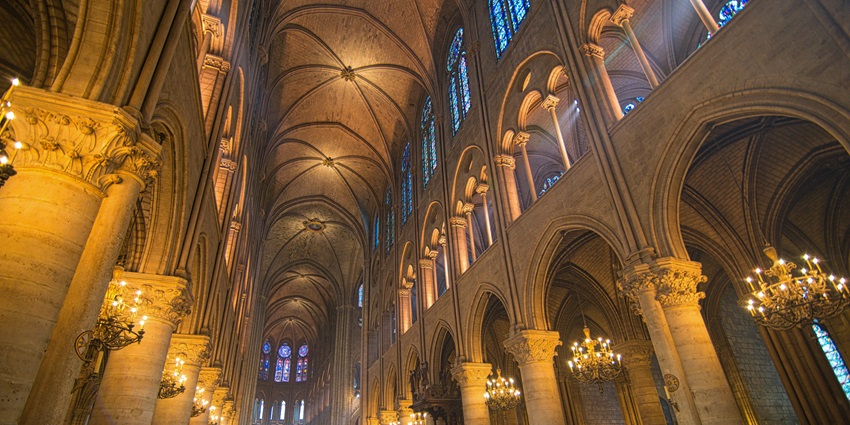
Photo: Jorge Láscar / Wikimedia Commons
Built between 1163 and 1345, Notre-Dame de Paris is a prime example of French Gothic architecture. Its innovative use of rib vaults and flying buttresses allowed for expansive stained-glass windows, including the famed rose windows. The cathedral has witnessed significant events, from Napoleon’s coronation to the liberation of Paris in 1944. The now-collapsed spire was added by Eugène Viollet-le-Duc as part of a restoration inspired by Victor Hugo’s 1831 novel.
Location: Île de la Cité, Paris
Nearest Railway Station: Saint-Michel – Notre-Dame (RER B, C)
Timings: 8 AM – 6.45 PM
Entry Fee: Free for the cathedral; €5 / ₹450
Best Restaurants To Visit: Le Petit Châtelet offers traditional French cuisine.
Best Hotels To Stay: Hotel Les Rives de Notre-Dame offers Seine views.
4. Château De Chambord
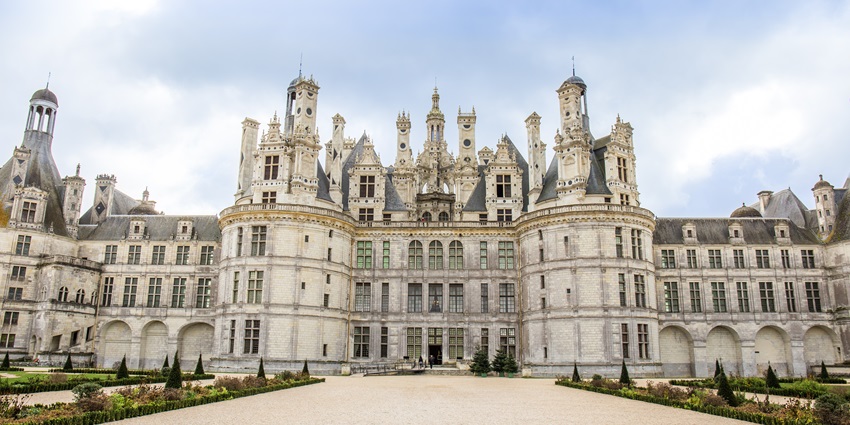
Photo: Nono vlf / Wikimedia Commons
Commissioned by King Francis I in 1519, the Château de Chambord exemplifies French Renaissance architecture, blending medieval forms with classical elements. Its double-helix staircase, possibly influenced by Leonardo da Vinci, is a marvel of design. Despite its grandeur, the château was rarely inhabited and fell into neglect post-Revolution. It protected art masterpieces from the Louvre during World War II. Restoration efforts have preserved its 440 rooms and extensive grounds.
Location: Loir-et-Cher, Centre-Val de Loire
Nearest Railway Station: Blois-Chambord
Timings: 9 AM – 5 PM
Entry Fee: €14.50 / ₹1,300
Best Restaurants To Visit: La Maison d’à Côté offers Michelin-starred dining nearby.
Best Hotels To Stay: Relais de Chambord offers luxury within the estate.
5. Palace Of Versailles
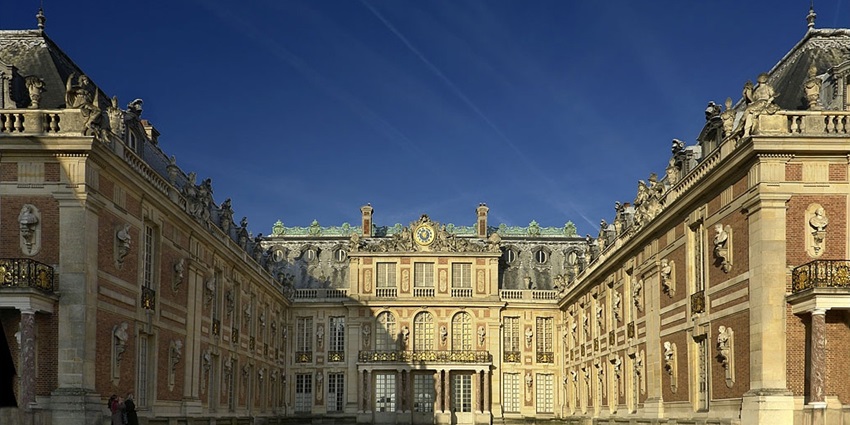
Photo: Eric Pouhier / Wikimedia Commons
The Palace of Versailles, transformed from a hunting lodge by Louis XIV, epitomises the absolute monarchy’s opulence. The Hall of Mirrors, adorned with 357 mirrors, hosted the signing of the Treaty of Versailles in 1919. André Le Nôtre created the elaborate fountains and sculptures in the palace’s gardens. Versailles also housed the Royal Stables, accommodating over 2,000 horses, reflecting the era’s equestrian culture.
Location: Versailles, Île-de-France
Nearest Railway Station: Versailles Château Rive Gauche (RER C)
Timings: Palace: 9 AM – 6.30 PM; Gardens: 8:00 AM – 8:30 PM
Entry Fee: €18–€20 / ₹1,600–₹1,800
Best Restaurants To Visit: Ore – Ducasse au Château offers fine dining within the palace.
Best Hotels To Stay: Waldorf Astoria Versailles – Trianon Palace offers luxury accommodations.
6. Arc De Triomphe
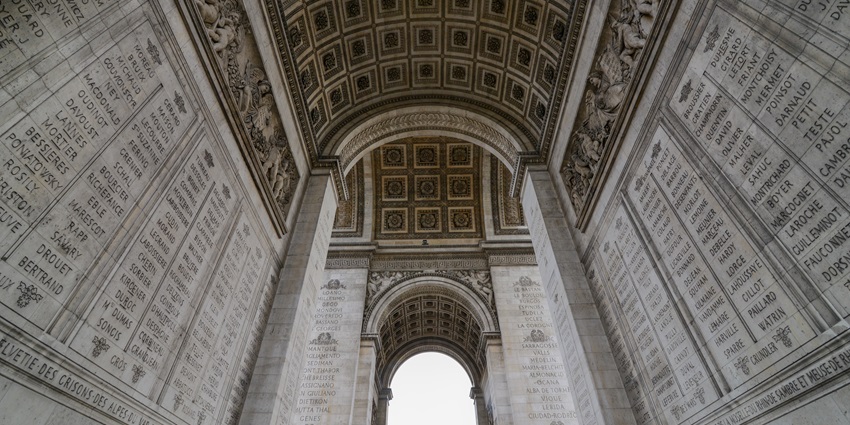
Photo: Jorge Láscar / Wikimedia Commons
The Arc de Triomphe, which Napoleon commissioned in 1806, commemorates the French soldiers who served in the Revolutionary and Napoleonic Wars. Standing at 50 meters, it features the names of generals and battles inscribed on its surfaces. Beneath lies the Tomb of the Unknown Soldier, with an eternal flame commemorating unidentified fallen soldiers. The monument has been the focal point for national celebrations and commemorations.
Location: Place Charles de Gaulle, Paris
Nearest Railway Station: Charles de Gaulle – Étoile (RER A, Metro Lines 1, 2, 6)
Timings: 10 AM – 10.30 PM
Entry Fee: €13 / ₹1,150
Best Restaurants To Visit: Bustronome Paris offers a dining experience on a moving bus.
Best Hotels To Stay: Hotel Napoleon provides luxury near the monument.
7. Sainte-Chapelle
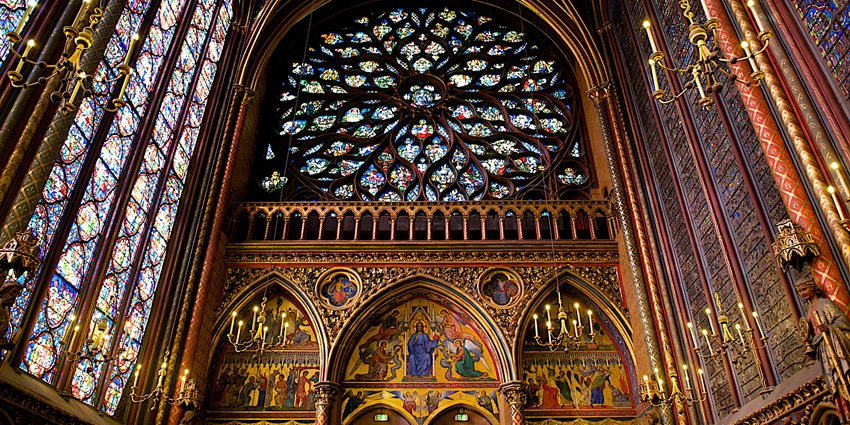
Photo: Mark Mitchell / Wikimedia Commons
Sainte-Chapelle, constructed between 1242 and 1248, was built to house King Louis IX’s collection of Passion relics, including the Crown of Thorns. Its upper chapel has fifteen 15-meter-tall stained-glass windows that show more than 1,000 biblical scenes. The chapel exemplifies the Rayonnant Gothic style, emphasising verticality and light. Despite damage during the French Revolution, restoration efforts have preserved its splendour.
Location: Île de la Cité, Paris
Nearest Railway Station: Saint-Michel – Notre-Dame (RER B, C)
Timings: 9 AM – 7 PM
Entry Fee: €11.50 / ₹1,000
Best Restaurants To Visit: Les Deux Palais offers traditional French cuisine nearby.
Best Hotels To Stay: Hotel Les Rives de Notre-Dame offers proximity to the chapel.
8. Pont Du Gard
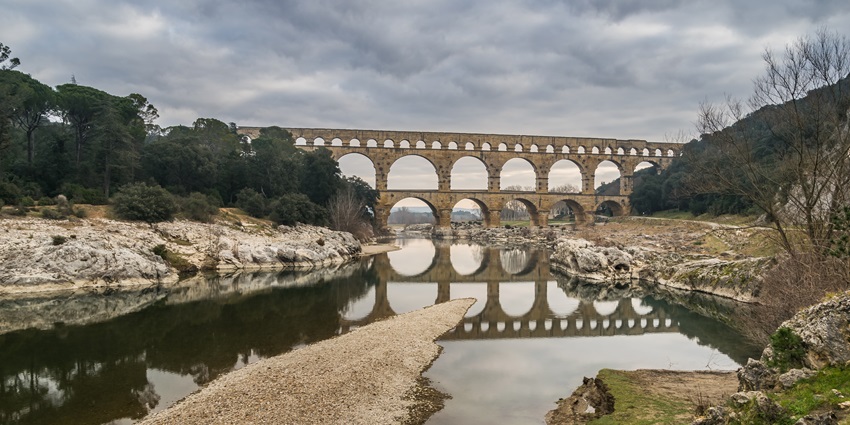
Photo: Krzysztof Golik / Wikimedia Commons
One example of ancient engineering is the Pont du Gard, a Roman aqueduct bridge constructed in the first century AD. Spanning 275 meters, it transported water over 50 kilometres to Nîmes. Constructed without mortar, its stones fit precisely, showcasing Roman craftsmanship. The three levels of the bridge’s arches have endured for millennia, enduring both human meddling and flooding. In the Middle Ages, it served as a toll bridge, ensuring its preservation.
Location: Vers-Pont-du-Gard, Occitanie
Nearest Railway Station: Nîmes-Pont-du-Gard
Timings: 9 AM – 6 PM
Entry Fee: €9.50 / ₹850
Best Restaurants To Visit: Les Terrasses offers dining with river views.
Best Hotels To Stay: Hotel Le Colombier offers rustic charm.
9. Panthéon
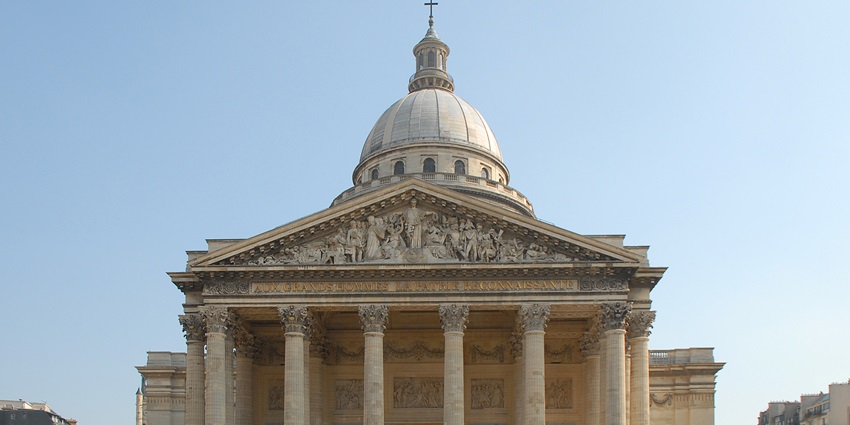
Photo: Camille Gévaudan / Wikimedia Commons
Originally built as a church dedicated to Saint Genevieve, the Panthéon was repurposed during the French Revolution to honour great French citizens. Inspired by the Pantheon in Rome, its neoclassical façade includes Corinthian columns and a pediment that shows the country presenting its heroes with laurels. The interior houses the remains of luminaries like Voltaire, Rousseau, and Marie Curie. A notable feature is Foucault’s Pendulum, demonstrating Earth’s rotation.
Location: Latin Quarter, Paris
Nearest Railway Station: Luxembourg (RER B)
Timings: 10 AM – 6.30 PM
Entry Fee: €11.50 / ₹1,000
Best Restaurants To Visit: Le Comptoir du Panthéon offers classic French dishes.
Best Hotels To Stay: Hotel des Grands Hommes provides elegant accommodations.
10. Sacré-Cœur Basilica
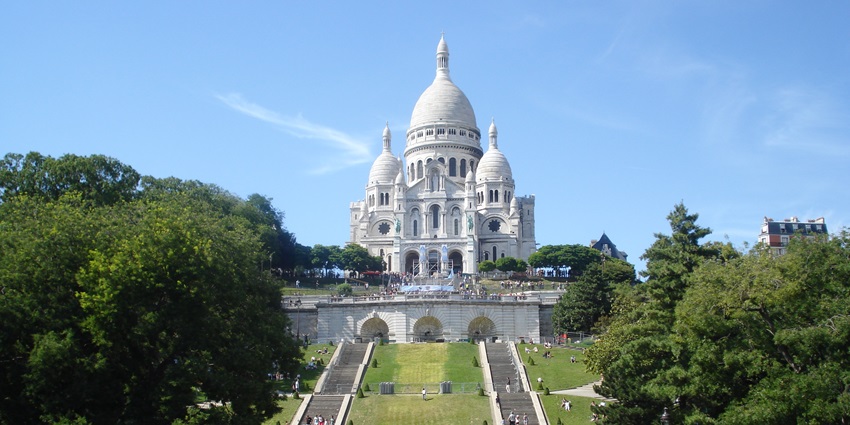
Photo: Superchilum / Wikimedia Commons
Perched atop Montmartre, the Sacré-Cœur Basilica was constructed between 1875 and 1914 as a symbol of national penance. Its Romano-Byzantine architecture, characterised by white travertine stone, gives it a distinctive appearance. One of the biggest mosaics in the world, which shows Christ in Majesty, is housed in the basilica. Despite construction challenges due to unstable ground, it was completed and consecrated in 1919. The basilica remains a place of worship and a popular tourist destination, offering panoramic views of Paris.
Location: Montmartre, Paris
Nearest Railway Station: Anvers (Metro Line 2)
Timings: Basilica: 6 AM – 10.30 PM; Dome: 9 AM – 7 PM, 9 AM – 6 PM (winter)
Entry Fee: Basilica: Free; Dome: €6 / ₹530
Best Restaurants To Visit: Le Pantruche offers modern French cuisine.
Best Hotels To Stay: The Terrass Hotel provides rooftop views.
Exploring the most iconic monuments in France is like stepping into a living museum where history, art, and architecture converge. From the towering elegance of the Eiffel Tower to the spiritual calm of Mont Saint-Michel, each site offers a unique window into the country’s rich heritage. Whether you’re drawn by medieval cathedrals, majestic châteaux, or ancient Roman aqueducts, these landmarks promise unforgettable experiences. Explore trips offered by TripXL for an amazing experience.
Cover Photo: Chiugoran / Wikimedia Commons


 WhatsApp
WhatsApp
 Twitter
Twitter









